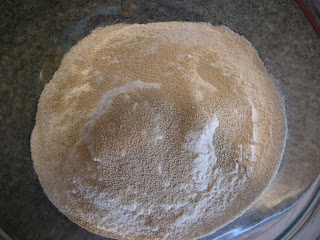I'm livid. I just found sugar where I never would have dreamed it would be: in pepper. Garlic pepper, to be exact. My husband buys our spices and experiments with them nightly. Our homemade pasta sauces are spicy and exquisite. Garlic pepper just happens to be one of the organic, high quality spices he brought home months ago. I've been using it regularly on my homemade sweet potato fries. I learned a long time ago to check the ingredients of salt, but it never occurred to me to look at the ingredients of pepper.
Last night I doctored up my batch of sweet potato fries with garlic pepper and noticed strange clumps of pepper. I wondered if this "fresh" brand of garlic pepper goes bad quickly. Then I noticed a tiny dried, green herb that I had not noticed before. That was a surprise. I had never looked closely at the bottle of garlic pepper before, but when I did I noticed a lot of the dried green herb. Funny, the bottle was just labled, "Garlic Pepper". When I examined the bottle for an ingredients list, I discovered this:
Ingredients: organic garlic, spices (organic black pepper and organic parsley), sea salt, organic onion, organic cane sugar, silicon dioxide (an anti-caking agent).
The product brand is called "Simply Organic" and the company is one of my favorite organic spice suppliers, Frontier. This company supplies many health food stores with their supply of bulk herbs and spices.
As has happened before over the last two years, my heart sank. Not only have I been eating it, it is a sad reminder that nothing is exempt from the possibility of having sugar added to it. Now when Jeff and I look for spices, we will have to bring a magnifying glass to read the tiny ingredients on each bottle.
Not only is this a tedious task (reading the labels on every grocery purchase can literally take hours) but this indicates a scary trend. It seems like every company recognizes the "value" of adding sugar to its products--it will taste better than its competitor's product. Organic, "high quality", expensive brands are apparently not exempt from lowering their standards to include sugar. If someone wants to add a sweetener to their food, it should be their choice. We should not have to strain our eyes for hidden sugars where they might be sneaked in.
































